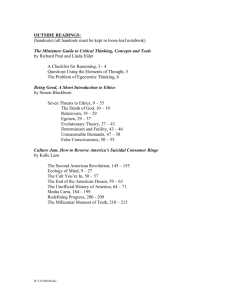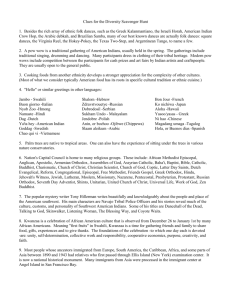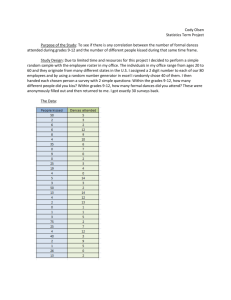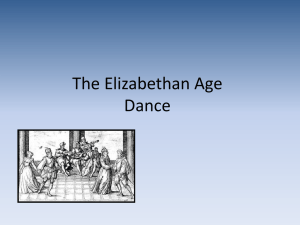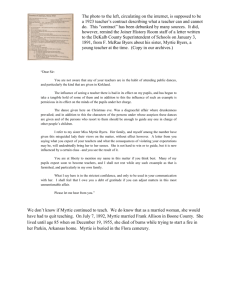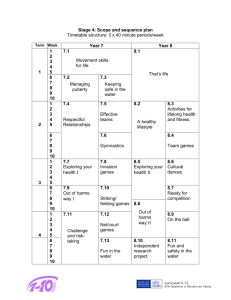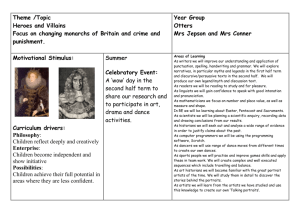Assignment 1: Mathematical Methods in Linguistics
advertisement
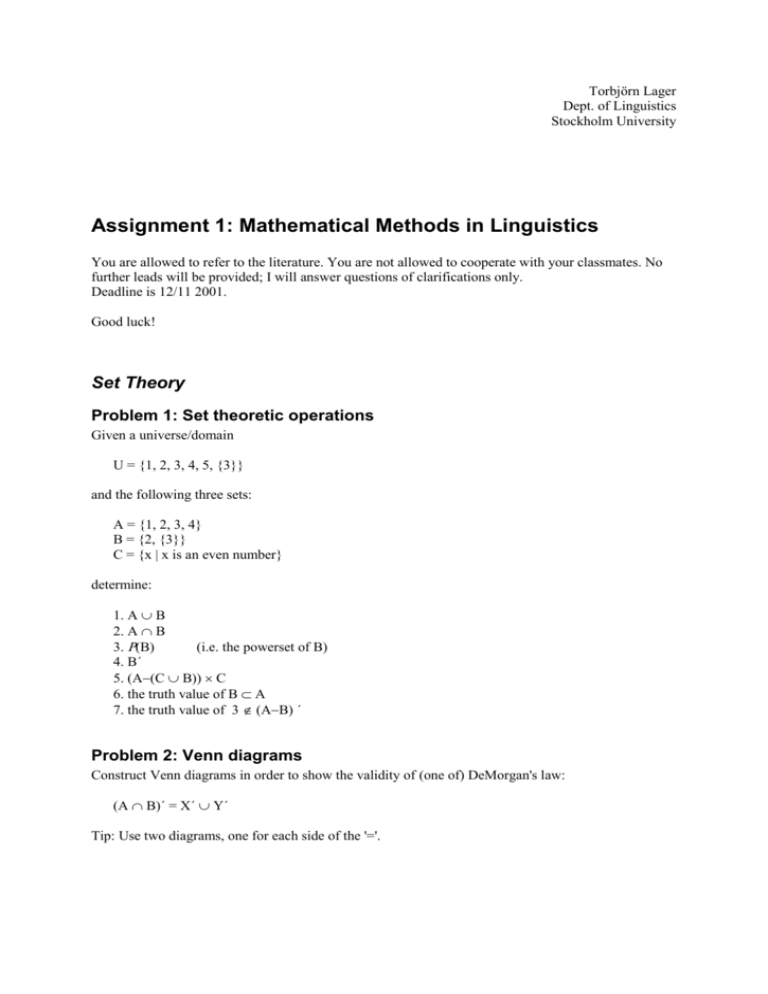
Torbjörn Lager
Dept. of Linguistics
Stockholm University
Assignment 1: Mathematical Methods in Linguistics
You are allowed to refer to the literature. You are not allowed to cooperate with your classmates. No
further leads will be provided; I will answer questions of clarifications only.
Deadline is 12/11 2001.
Good luck!
Set Theory
Problem 1: Set theoretic operations
Given a universe/domain
U = {1, 2, 3, 4, 5, {3}}
and the following three sets:
A = {1, 2, 3, 4}
B = {2, {3}}
C = {x | x is an even number}
determine:
1. A B
2. A B
3. (B)
(i.e. the powerset of B)
4. B´
5. (A(C B)) C
6. the truth value of B A
7. the truth value of 3 (AB) ´
Problem 2: Venn diagrams
Construct Venn diagrams in order to show the validity of (one of) DeMorgan's law:
(A B)´ = X´ Y´
Tip: Use two diagrams, one for each side of the '='.
Statement Logic
Problem 1: Translation
Use the following translation scheme,
P: John dances.
A: Pam wins the lottery.
Q: Mary dances.
B: Quentin wins the lottery.
R: Bill dances.
C: Rebecca wins the lottery.
S: John is happy.
D: Pam quits her job.
T: Mary is happy. E: Quentin quits his job.
U: Bill is happy.
F: Rebecca quits her job.
and translate:
1.
2.
3.
4.
If neither John nor Bill is dancing, Mary is not happy.
Unless Quentin quits his job, both Pam and Rebecca quit their jobs.
It's not the case that either Pam or Rebecca quits her job.
If Mary dances only if Bill dances and John dances only if Mary dances,
then John dances only if Bill dances.
5. John's dancing is necessary to make Mary happy.
NOTE: Sentence involving quantity expressions (e.g., "at least one", "exactly two" "all", etc.) are to be
thought of as concerning only the three potential dancers John, Bob, and Mary, or the three potential
lottery winners Pam, Quentin, and Rebecca. Thus, if the sentence to be translated is "At least one of
the three will win the lottery," your answer would be "A (B C)" (or something equivalent to it).
Problem 2: Semantics
Construct a truth table for:
(A B) & (A or (A B))
Is the sentence a tautology, a contradiction, or is it contingent?
Problem 3: Proofs
Use the rules of inference in Table 6-15 to:
a) Prove T & U from:
1. (Q R) & S T
2. Q & U
3. S U
b) Prove P S from:
1. P Q
2. Q R
3. R S
c) Explain, in logical terms, what's wrong with the following argument:
Men are animals
Animals are mute
Therefore: Men are mute
Predicate Logic
Problem 1: Translation
Translate the following sentences into predicate logic. You may use the following predicate
symbols/individual constants: P = politician, C = crook, L = liar, g = Göran
1. Göran is not a liar.
2. No politicians are liars.
3. Among the politicians, all those who are crooks are liars.
4. Politicians are neither liars nor crooks.
5. Every politician is both a crook and a liar.
6. Some politician is neither a liar nor a crook.
Problem 2: Models and Interpretation
Given the model M:
Domain:
{Sune, Kalle, Petter, Mats, Bettan, Tobbe}
Interpretation:
F(s) = Sune
F(m) = Mats
F(k) = Kalle
F(b) = Bettan
F(p) = Petter
F(t) = Tobbe
F(H) = {Sune, Kalle, Petter}
F(M) = {Sune, Kalle, Petter, Mats, Bettan, Tobbe}
F(C) = {<Sune,Kalle>, <Kalle, Petter >, <Sune, Petter>, <Petter, Kalle>}
F(L) = {<Sune,Sune>, <Sune, Kalle >, <Mats,Bettan>, <Mats,Petter>,
<Bettan,Mats>, <Tobbe,Petter>, <Petter,Mats>, < Kalle,Tobbe>}
determine the truth value of:
1.
2.
3.
4.
5.
6.
L(k,s)
x[L(m,x) & H(s)]
x[H(x) & M(x)]
y [x [L(x,y)]
x[L(m,x) H(x)]
xyz[C(x,y) & C(y,z) C(x,z)]
Motivate your answers!
